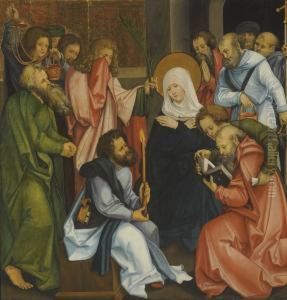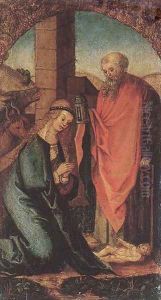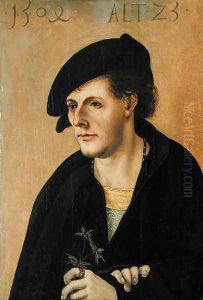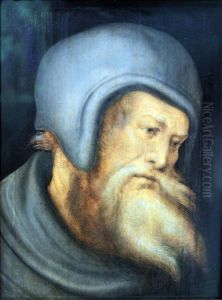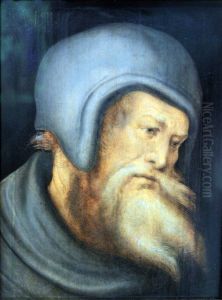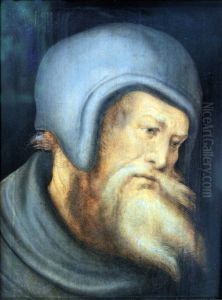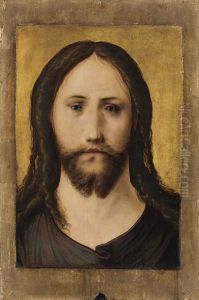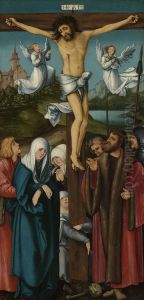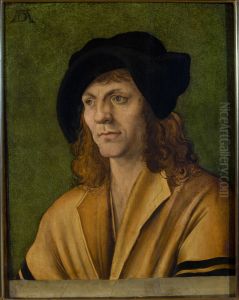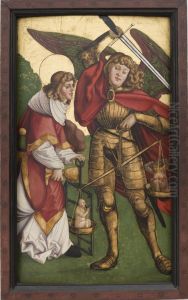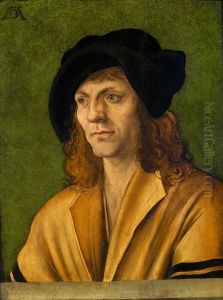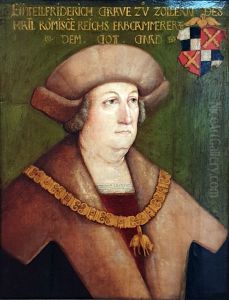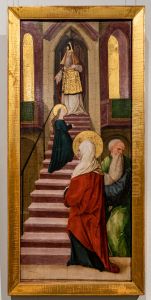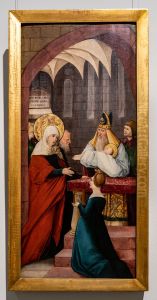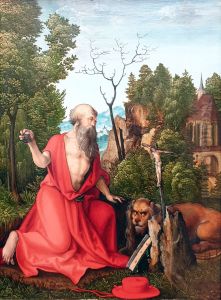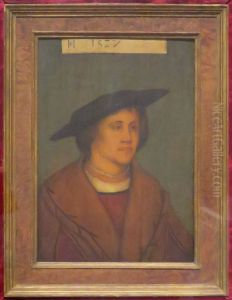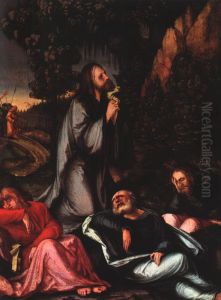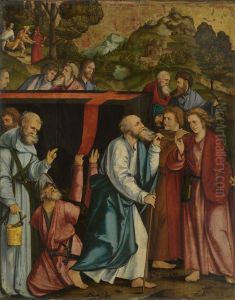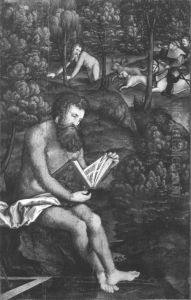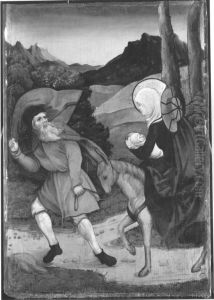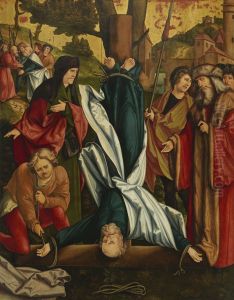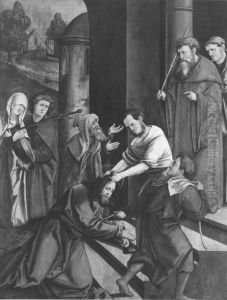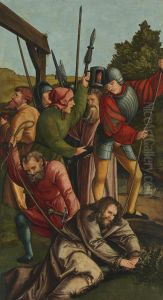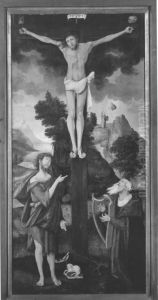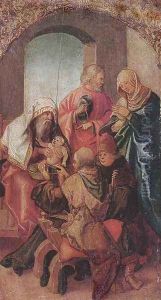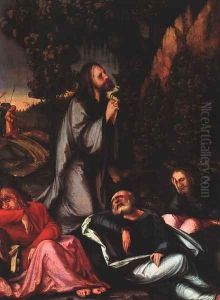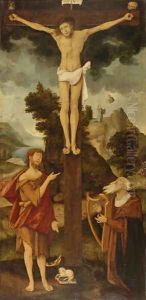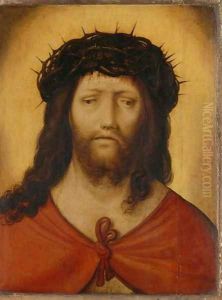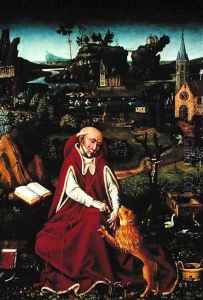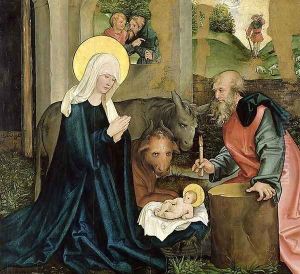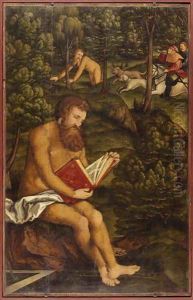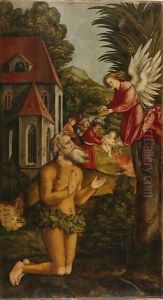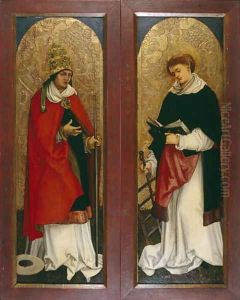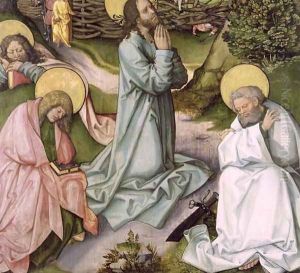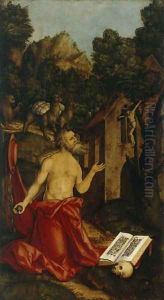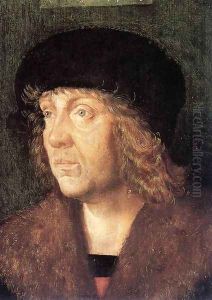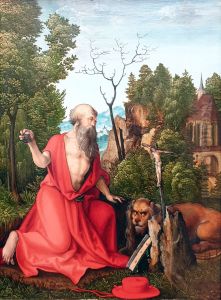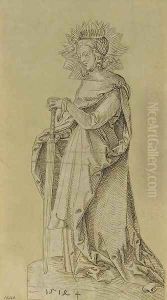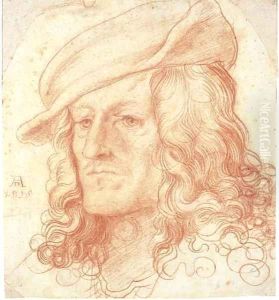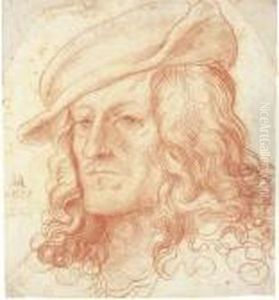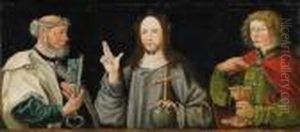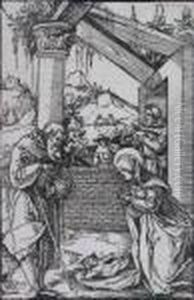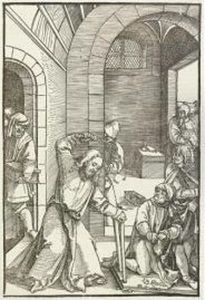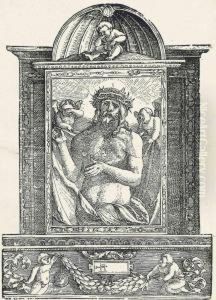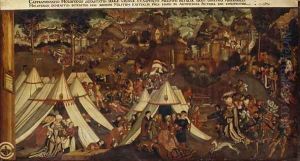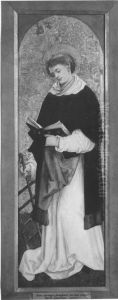Hans Leonhard Schaufelein Paintings
Hans Leonhard Schaufelein was a notable German artist from the Renaissance period, known primarily for his work as a painter and woodcut designer. Born around 1480 in the town of Nördlingen, then part of the Holy Roman Empire, Schaufelein showed an early aptitude for visual arts. His initial training is not well documented, but it is widely believed that he was an apprentice in the workshop of Michael Wolgemut, the same master who trained Albrecht Dürer.
Schaufelein's early works are reminiscent of Dürer's style, indicating the influence of his master's workshop. He is known to have been in Dürer's workshop by 1503, as evidenced by his contributions to Dürer's woodcut series, such as the 'Life of the Virgin' and the 'Small Passion'. These works exhibit fine detail and a command of the woodcut medium that would become characteristic of Schaufelein's style.
By 1509, Schaufelein had moved to Augsburg and later to Nördlingen, where he became a master in his own right. His work from this period began to show a distinct style, with an emphasis on vivid color and expressive characters. Schaufelein also worked on several altar pieces and religious compositions, which were common commissions of the time.
Schaufelein's woodcuts were influential in disseminating Renaissance aesthetics throughout Germany, and his prints were widely circulated. He is often credited with helping to spread the influence of Dürer's work as well as developing his own unique approach to composition and form.
Although less information is available about Schaufelein's personal life, his artistic legacy is evident in the surviving body of work. He is believed to have died around 1540, leaving behind a significant contribution to the Northern Renaissance, particularly in the realm of printmaking. Schaufelein's works can be found in several museums and his influence can be seen in the works of subsequent generations of German artists.
